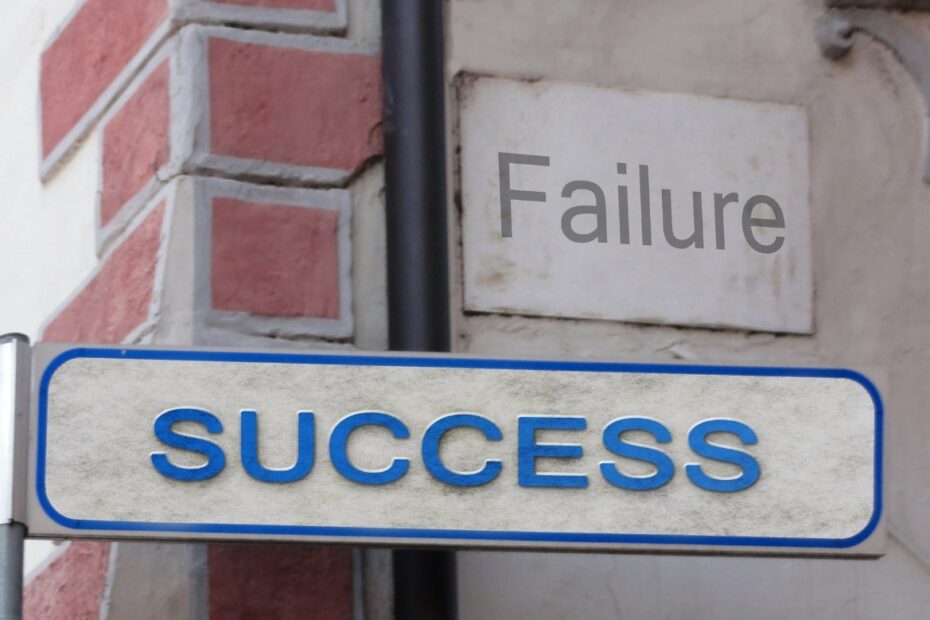Failure, that scary word
While culture may impact the perceived meaning of failure from country to country, all over the word this simple word carries a stigma and a burden that no one wants to carry.
When we fail, we may feel a wide range of unpleasant feeling – frustration, weakness, willing to give up, unhappiness, hungry, shame, regret and so many others. We invested so much of ourselves and, yet, it was not enough. We lost time, energy, resources, all for nothing…
But, is this all it is?

Source: Image by geralt from https://pixabay.com/photos/success-failure-succeed-street-sign-259710/
Why is failure important?
When we invest in new ideas for innovation, the levels of uncertainty and risk are high. There are no guarantees on the success of a given idea.
Failure is part of the innovation process! If you are not ready to deal with failure you are not that ready to innovate.
Thinking about success, you may think about those well known entrepreneurs and companies. Their revolutionary solutions, their global success, the incredible revenue achieved. But have you ever asked yourself on the amount of times these entrepreneurs failed before they achieved success? The truth is that we are overloaded with the success stories, but the difficult path and failures faced to achieved it are kept aside.
So, reflexion number one, there’s no innovation without failure. Failure is a lesson ready to be learnt. While it’s impossible to scape the bad feeling we experience when we fail, the moment we move our focus from that and focus on learning on what went wrong and improve the way we do things we are open to learn and make sure we grow with the experience. We will become closer to success!
And reflexion number one lead us to reflexion number two. When you are a company owner or manager, failure brings an additional concern as it can compromise the sustainability and cause serious damages to your business. How to scape from this though? It’s important to “fail fast and fail cheap”. This means that before investing all your efforts in one “big” new idea you need to test it. Look for a pool of new ideas. Analyse it’s feasibility. Select the best ones. Test the acceptance and feasibility of the selected ones continuously, at several stages, and adjust the solution accordingly before “diving” into the full development and engagement of resources. This will allow you to evaluate the potential of success of a new idea since an early phase and give up of it if proven to be a failure before you invest too much in it. You will be able to manage the time and the resources you allocate to innovation, make more informed decisions, reduce risk and uncertainty at each moment. It will also save you from the negative impact failure may create. You can go from “I tried, I have failed, I will never do this again” to “I tried, I failed, I have learned, I will try better”, because, with this second way, you have not yet invested too much.
A final reflexion comes from a common saying “The one who has never failed is the one that has never tried”. You may feel comfortable with your business, you may have a good pool of customers, have a good income, but what will be the cost of not generating and implementing new ideas and innovating? How long will it take for other businesses to take your market share?
In a nutshell, ideation is at the fuzzy front end of innovation and failure is a reality you need to embrace to move towards innovation and success. The way you face it and pave the path from the idea to innovation will be key for the growth of your organization.
Failure is nothing more than an opportunity to learn and grow. Quoting Thomas A. Edison “I have not failed. I’ve just found a 10,000 ways that won’t work”.

 Polski
Polski Português
Português Español
Español Italiano
Italiano